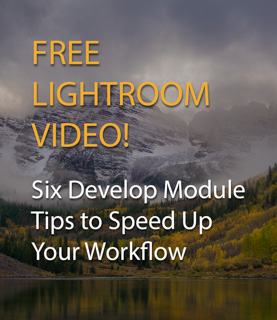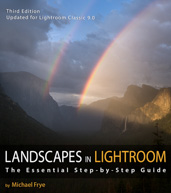by Michael Frye | Nov 17, 2019 | Vision and Creativity
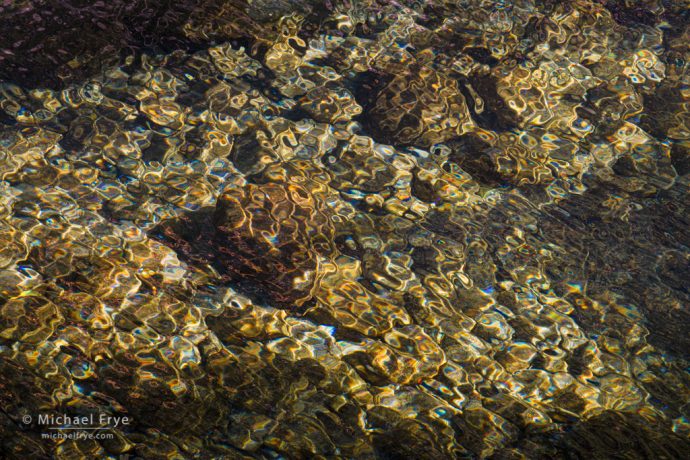
Rocks and ripples in the Merced River, Yosemite. Claudia, Charlotte Gibb, and I noticed some interesting patterns in the water while wandering along the river last year. I made a few compositions at one spot, then moved downstream, where I found Claudia and Charlotte looking at similar patterns with prism effects – little squiggly rainbows flashing across the water. I made a couple of photographs I liked last year, but then went back to that same spot last month, and this time found a sunlit patch of water surrounded by tree shadows, which gave the pattern a natural vignette. I needed a fast shutter speed to freeze the motion of the ripples, and a small aperture to keep everything in focus, so I raised the ISO to 1600 to get the shutter speed up to 1/125th sec. at f/16. The focal length was 200mm.
Landscape photographers usually hope for great conditions: a clearing storm, sun breaking through fog, a spectacular sunset, great fall color, dense patches of wildflowers, and so on.
I wouldn’t say it’s easy to make good photographs under such conditions. You still have to put yourself in the right place at the right time, find a good composition, and get the exposure and focus right. And all of those things take skill. But it’s certainly easier. In those highly-photogenic situations you just have to capture the gift that nature is giving you.
(more…)
by Michael Frye | Nov 3, 2019 | Composition
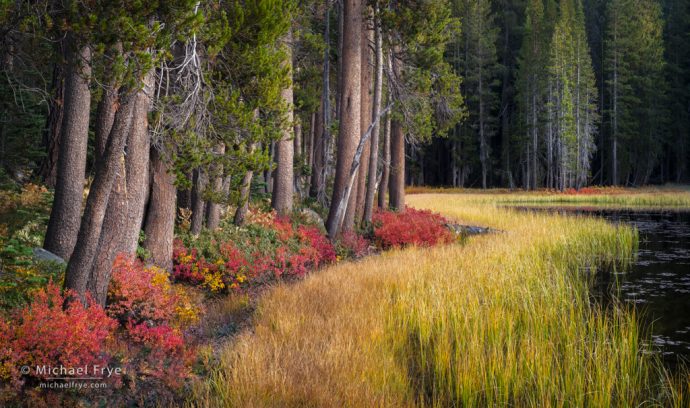
Autumn lakeshore, Yosemite. 50mm, 1/2 sec. at f/16, ISO 100, polarizer.
I sometimes get asked to recommend a book about composition, and my first suggestion is always Ian Plant’s ebook Visual Flow. Ian understands composition well, presents his concepts clearly, and doesn’t have much use for rules.
The title of the book suggests an important concept, but one that’s often overlooked. I think the best landscape compositions have a natural visual flow. Your eye doesn’t get stuck, but travels freely through the frame, pausing briefly at the key areas.
(more…)
by Michael Frye | Oct 20, 2019 | Light and Weather
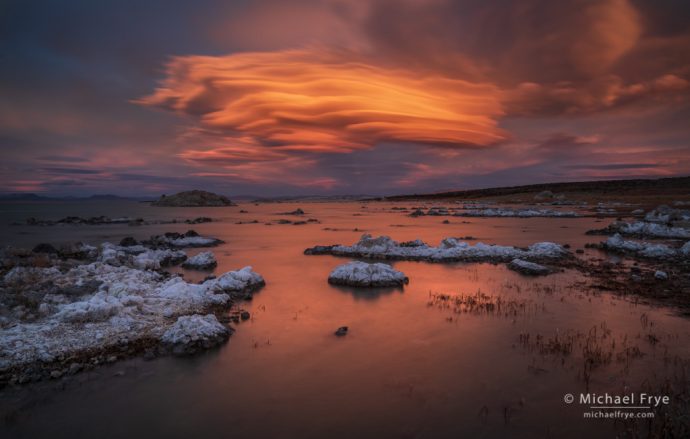
Lenticular cloud at sunset, Mono Lake, California. 20 seconds at f/14, ISO 100, 7-stop ND filter.
We just finished our workshop in the eastern Sierra, and had a great time. We had to look a little harder for colorful aspens this year, but in the end we found plenty.
The workshop ended on Friday. Yesterday Claudia and I slept in a bit, then did an interview, packed up our classroom space from the workshop, and had an early dinner at the Whoa Nellie Deli in Lee Vining.
(more…)
by Michael Frye | Jul 21, 2019 | Workshops
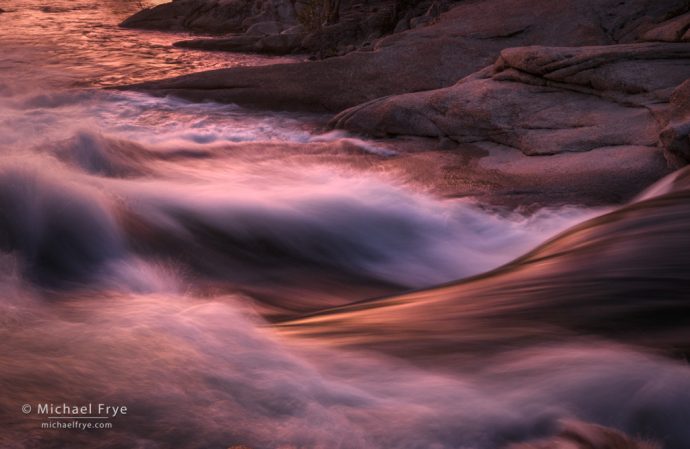
Sunset glow on the Tuolumne River, Yosemite. On our last evening some high clouds to the west turned orange and red at sunset, reflecting that golden glow into the water. 35mm, 1/2 second at f/16, ISO 500.
Claudia and I just got back home after spending about ten days in the eastern Sierra and Yosemite high country for our Range of Light workshop.
We borrowed the name of this workshop from John Muir, who famously called the Sierra Nevada “The Range of Light.” It’s worth reading the full quote – Muir at his best:
(more…)
by Michael Frye | Jul 11, 2019 | Composition
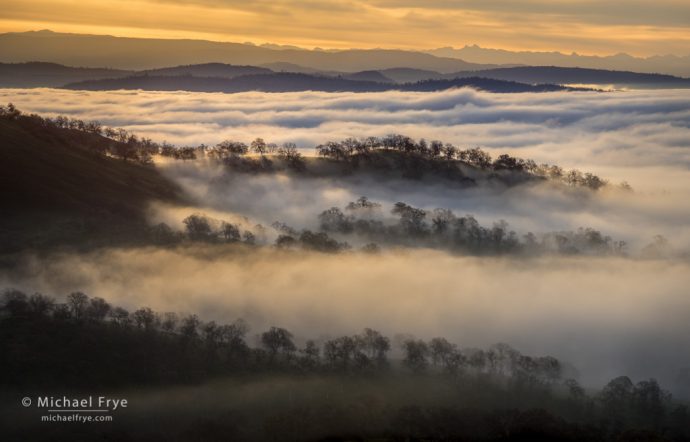
Ridges and peaks above the fog in the Sierra Nevada foothills, California (170mm)
One of my most popular posts was about creating a sense of depth in landscape photographs. In that post I talked about the most common formula for creating depth: a near-far juxtaposition with a wide-angle lens. And then I looked at other, less-common ways of creating depth, like atmospheric effects, perspective lines, and using an elevated vantage point to show a foreground, middle ground, and background. (If you haven’t read that post I recommend doing so; you’ll find it here.)
Creating a sense of depth in a two-dimensional medium like photography can be challenging. There’s no question that the wide-angle, near-far formula works, and in general it’s easier to make photographs with depth using shorter focal lengths rather than longer ones. Telephoto lenses are often better suited to compressing space, and finding two-dimensional patterns and designs out of a three-dimensional world.
(more…)






